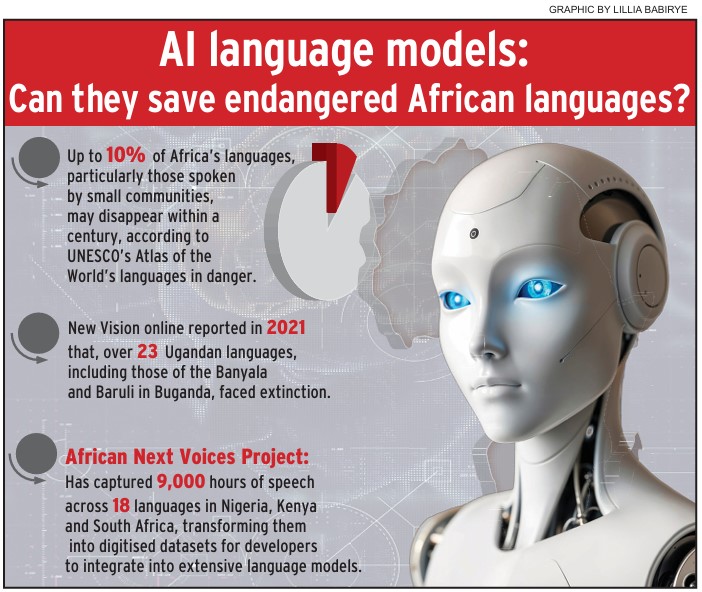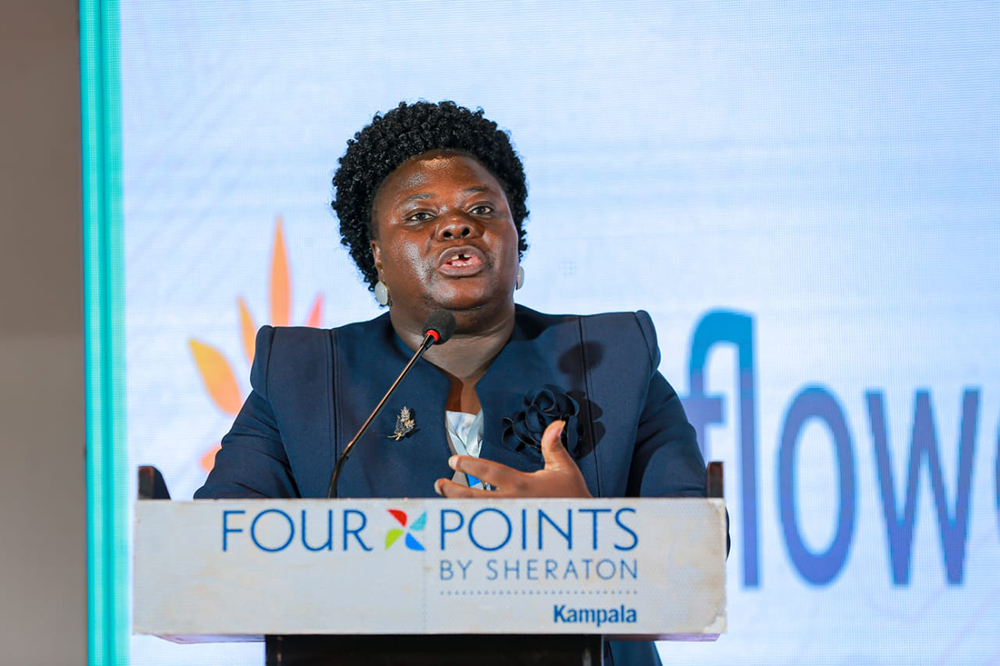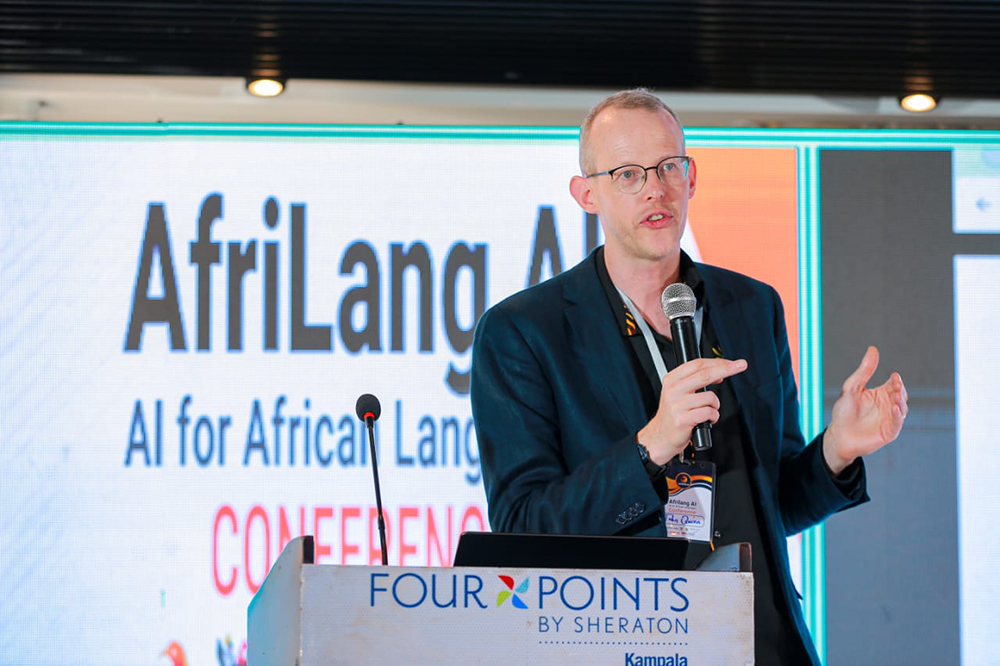AI language models: Can they save endangered African languages?
There is growing hope that several Artificial Intelligence (AI) language models in Africa and internationally hold great potential for preserving the continent’s endangered languages.
Dr. Aminah Zawedde, the Permanent Secretary at the Ministry of ICT and National Guidance. (Courtesy)
By Richard Wetaya
Journalists @New Vision
___________________
Edward Sseremba, 46, speaks Ruruuli, the language of the Baruuli and Banyala people who live in the districts of Nakasongola, Masindi, and Kayunga.
Sseremba, a teacher, lives in Kangulumira, in Kayunga district, with his three children and wife.
In 2021, New Vision published a story that highlighted his language (Ruruuli) as one of 23 in the country that are on the verge of extinction.
Sseremba says the report was regrettably accurate.
But there is growing hope that several Artificial Intelligence (AI) language models in Africa and internationally hold great potential for preserving the continent’s endangered languages.
According to UNESCO’s “Atlas of the World’s languages in danger”, up to 10% of Africa’s languages, particularly those spoken by small communities, may disappear within a century.
Dr Aminah Zawedde, the Permanent Secretary at the Ministry of ICT and National Guidance, says that with the emergence of AI language models, the era of designating certain African languages as endangered will soon end.
“It is in the realm of possibilities, especially with the dawn of AI language models, such as large language models, automated transcription and speech recognition,” Zawedde says.
Speaking recently at Africa’s inaugural AI for African languages conference, at the Four Points by Sheraton in Kampala, Dr Zawedde emphasised that while challenges such as technological accessibility, limited data availability and ethical concerns over language ownership still hinders widespread implementation of these technologies in most African countries, there is no question that Uganda and the rest of the continent can preserve linguistic diversity and cultural heritage by leveraging the power of AI.
The conference also featured the launch of Uganda’s first multilingual AI model, known as Sunflower.

Babra Babweteera, the Executive Director of the Cross-Cultural Foundation of Uganda. (Courtesy)
Babra Babweteera, the Executive Director of the Cross-Cultural Foundation of Uganda, notes that AI language models will contribute to the long-term revival of not only endangered languages in Uganda, but also other endangered native African languages, as well as improve linguistic resilience.
She adds: “However, there is a need to proceed cautiously because although AI may help preserve languages, it may also make mistranslations more likely because it may be difficult to understand the context and cultural nuances of some African languages, which could result in inaccurate translations.”
Sseremba says AI language models may just be the technologies that - in the course of time - salvage his language.
“I am ready to share with any AI language model developer whatever non-verbal and verbal cues I know about my language,” he says eagerly.
The need to innovate AI language systems locally
Dr John Quinn, a Research Software Engineer who has worked on several large-scale AI projects across the African continent in the fields of remote sensing, speech, and language, observes that while AI could, among other things, create translation tools to help people communicate in endangered languages, it will be critical in the context of Africa to innovate locally.

Dr John Quinn, a Research Software Engineer, who has worked on several large-scale AI projects across the African continent. (Courtesy)
“AI language systems will only help to preserve Uganda’s and Africa’s endangered languages if local teams are working on them,” says Quinn, who is also the Research Director of Sunbird AI, a non-profit organisation that develops artificial intelligence systems for social impact in Africa, such as Uganda’s own Sunflower.
By all accounts, the Sunflower AI language model is built to understand and communicate in over 31 Ugandan languages.
It will ostensibly bridge Uganda’s digital language divide and make technology inclusive.
Documenting and digitising endangered languages’ knowledge systems
Prof. Engineer Bainomugisha, an associate Professor and Chair of the Department of Computer Science at Makerere University, explains that in cases where only a few speakers of languages remain, such as in the Northern Cape region of South Africa, where fewer than a dozen elderly individuals speak the N/uu language, and parts of Tanzania where fewer than 1,000 speakers now speak the Hadza language, AI language models could play a big role in documenting and digitizing the language’s indigenous knowledge systems, making it a valuable resource for teaching, research, and language revival.
“There are examples of where this has been successful globally, for instance, with Maori and Hawaiian, in New Zealand and Hawaii, where AI-assisted tools are helping communities to learn and use their languages more actively. In Uganda, Sunbird AI, has become aware of some languages that have just about two remaining speakers. We are working with organisations to document and preserve such languages.”
According to Vukosi Marivate, a professor of computer science at the University of Pretoria in South Africa, the successful fusion of traditional knowledge with contemporary technology is what will determine the future of African languages.
“With that said, there is need on the African continent, which is home to one third of the world’s languages, for increased financial investment in language preservation technology models and expanded community engagement preservation efforts.”
He says increased financial investments will complement the $10m pledged by the Gates Foundation and other donors from the AI for Development Funders Collaborative to ensure AI models are more inclusive of African languages.
AI virtual assistants and translation services: A threat to indigenous African languages?
In response to widespread concerns that the growing use of AI-powered virtual digital assistants and multilingual neural machine translation services may put indigenous languages at risk, Dr Quinn says it is critical to have local AI systems that understand the languages and cultures that are important to African communities.
“The largest AI systems are made by companies in the US: so, if you ask ChatGPT a question about the traditions or cultures of local communities, it may not know or might give a biased answer. This is why we need local AI systems which understand the languages and cultures that are important to those communities and would be overlooked by large companies in the US. What we’re trying to do at Sunbird AI, and our collaborators at Makerere University and elsewhere, is make tools which people find relevant and useful,” he said.
Challenges African AI developers could face as they work to boost AI Language model adoption
The major challenge, according to Bainomugisha, lies in the scarcity of high-quality language resources (written documents about the African languages themselves or materials in the languages and audio recordings) required to train language models.
“Developing these resources demands time, funding, and collaboration with native speakers and linguistic experts. In some cases, it may even involve identifying the few remaining speakers of a language and working closely with them to collect authentic data. Then there are hurdles like technical infrastructure and computing resources. These require funding. Overcoming these challenges will require partnerships between researchers,” he says.
Quinn, for his part, says the major hurdle African developers face is a lack of access to the same amount of computing resources as developers in other parts of the world.
“To that end, inventiveness will be needed to figure out how to get things working with what we have.”
Some key African initiatives harnessing AI to preserve African languages
African Next Voices Project: The project has captured 9,000 hours of speech across 18 languages in Nigeria, Kenya, and South Africa, transforming them into digitised datasets for developers to integrate into extensive language models.
Lelapa AI's InkubaLM: Africa's first multilingual small language model, trained on 2.4 billion tokens in five African languages (Yoruba, Hausa, Swahili, IsiZulu, and IsiXhosa).
Maseno Centre for Applied AI: A centre in Kenya collecting voice data for five languages, including Dholuo, Maasai, Kalenjin, Somali, and Kikuyu.
African Universal Dependencies Treebanks: A project that aims to increase the representation of African languages in AI research by creating a quality dataset with consistent syntactic human annotations for eleven typologically diverse African languages.
Data Science Nigeria: An organisation collecting speech data in multiple languages, including Bambara, Hausa, Igbo, Nigerian Pidgin, and Yoruba.
Source: Google.
